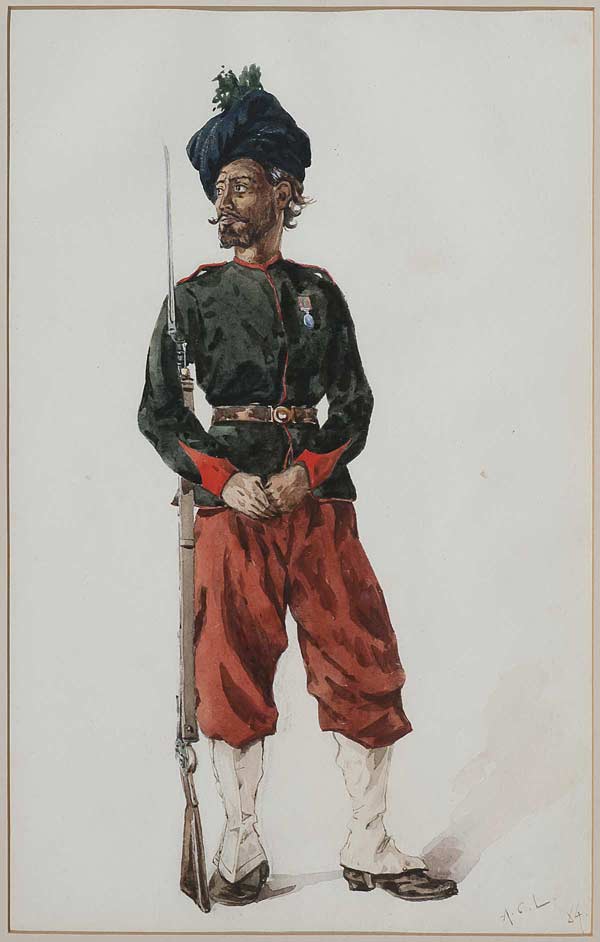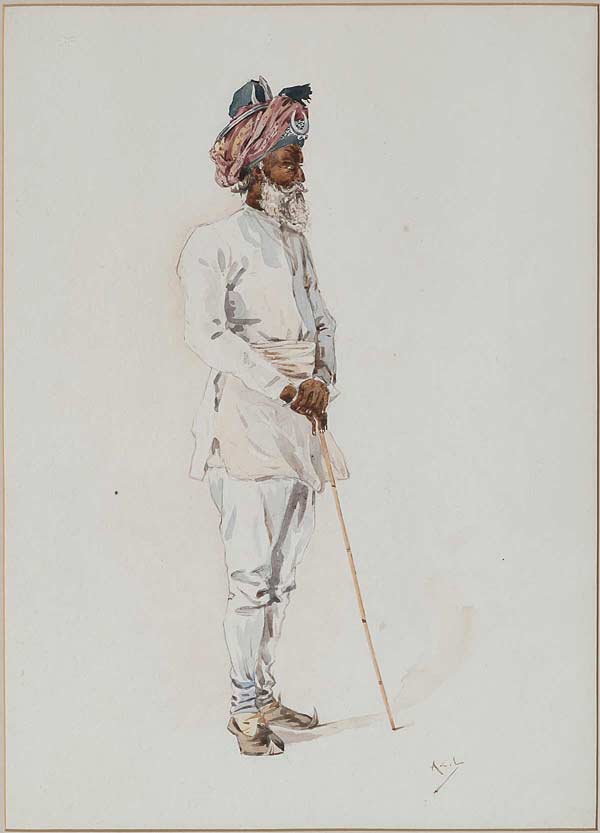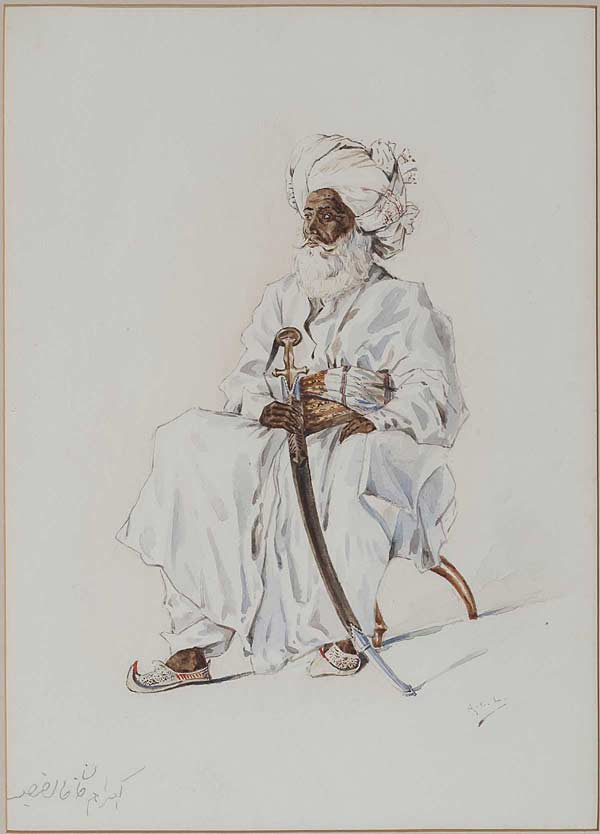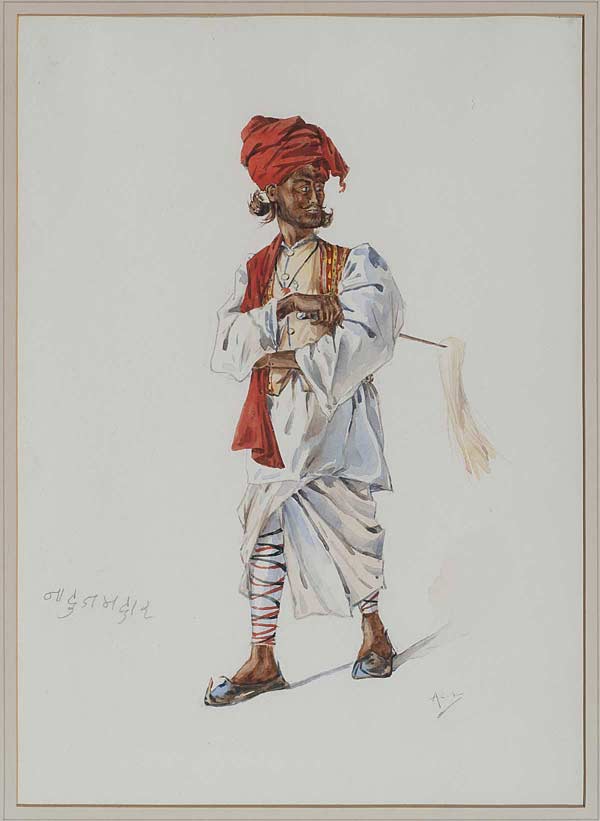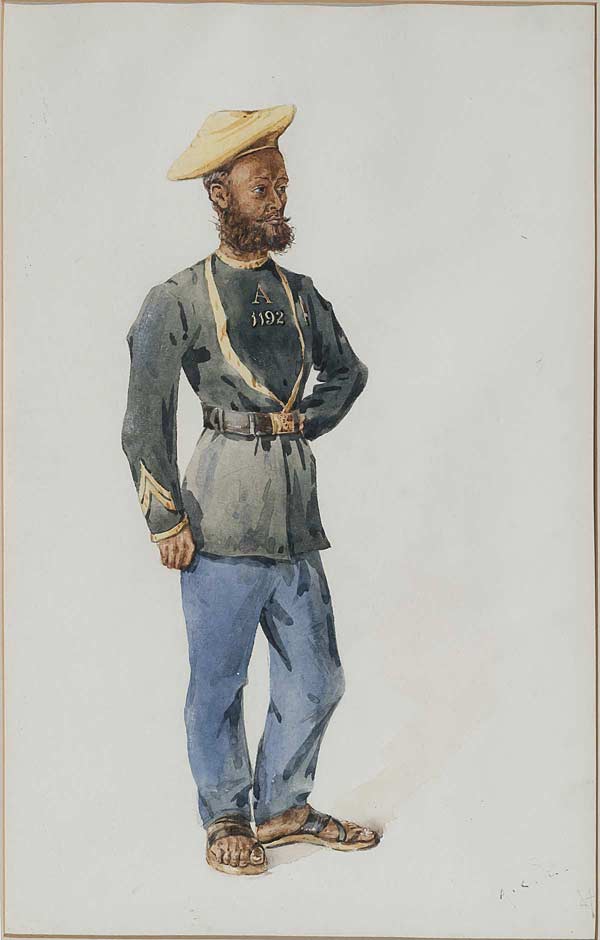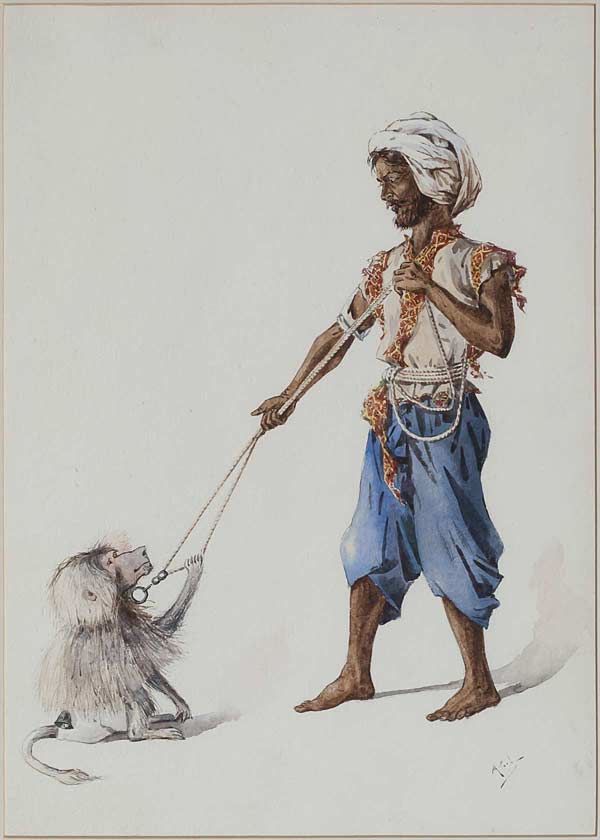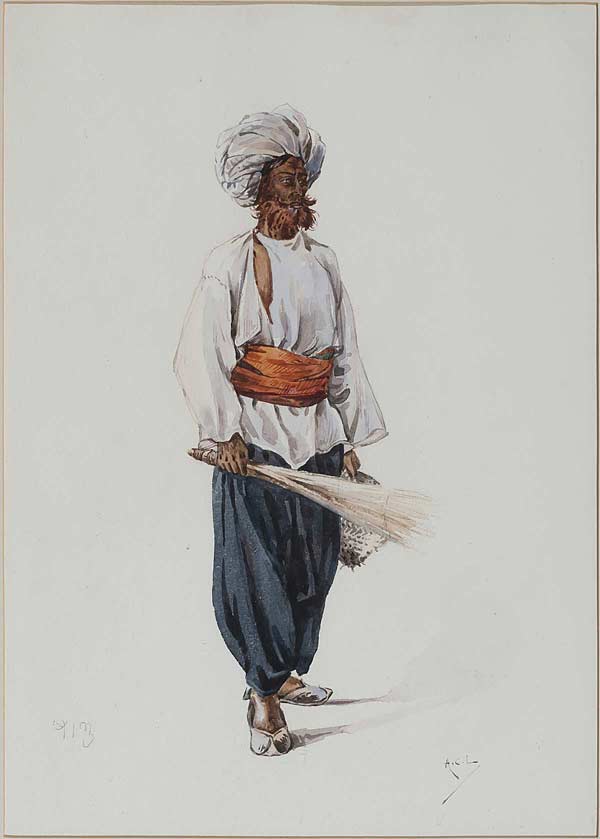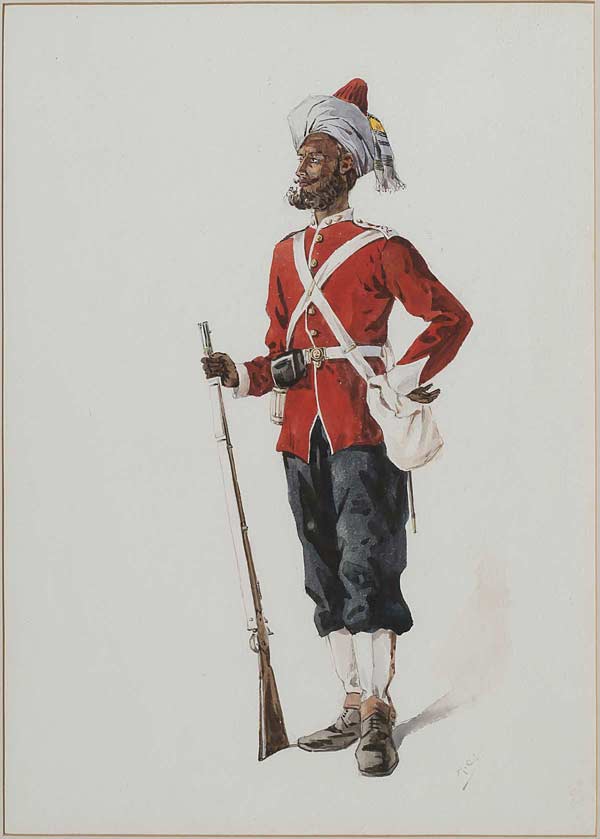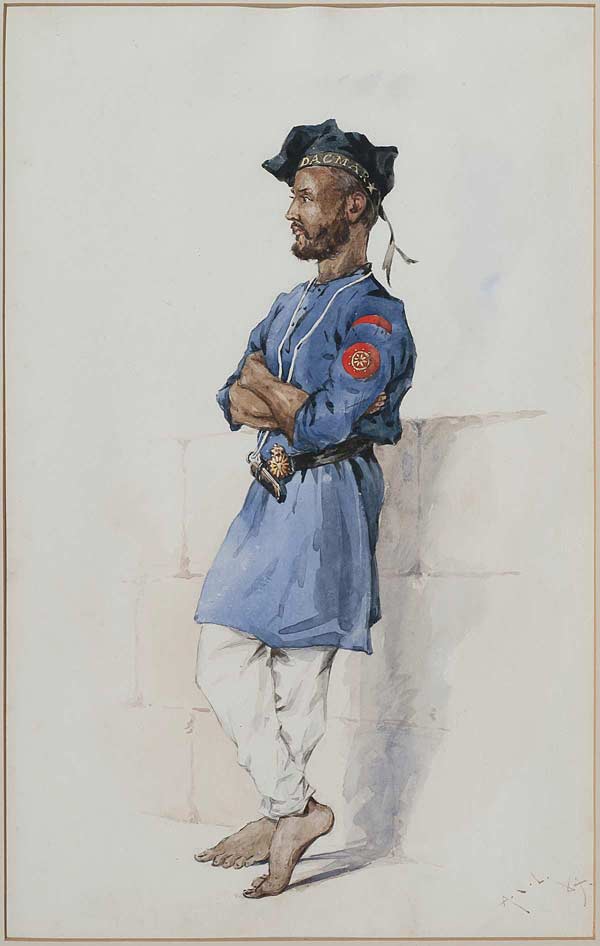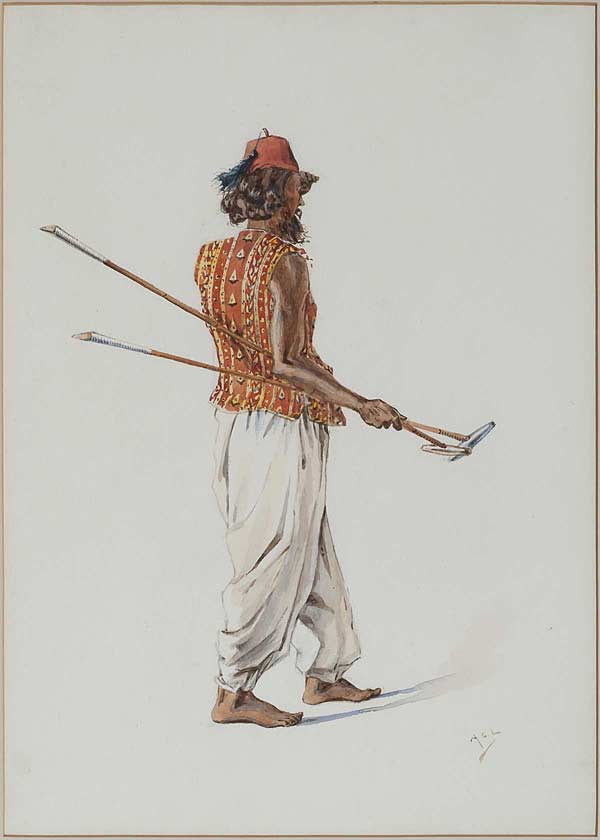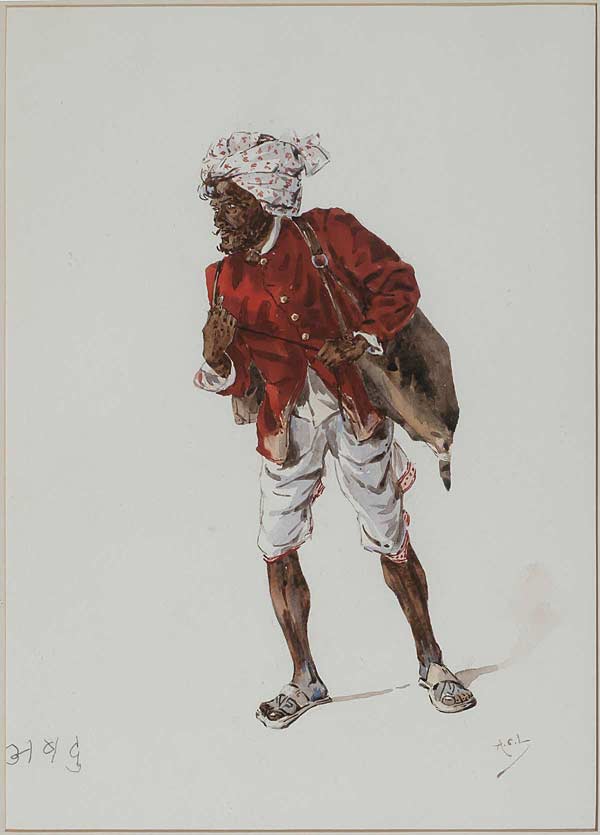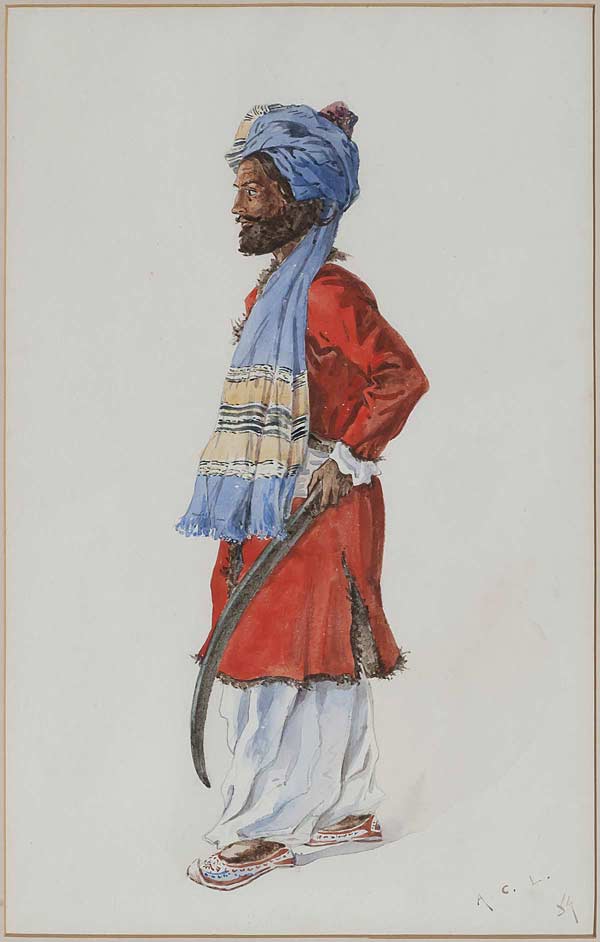Painting
Collection IndexTwelve Various Indian Subjects
Alfred Crowdy Lovett
(1862 – 1919)
- Collection of twelve various Indian subjects
Watercolour on paper
Bombay 1884
32 x 22 cms
The twelve watercolours described below are the work of a young Alfred Crowdy Lovett. The records of the Gloucestershire Regiment museum show that he was a Lieutenant in 2nd Battalion, The Gloucestershire Regiment (known as 61st Regiment of Foot) on 25th August, 1883 when they were in Karachi. The Regiment moved to Poona in 1883, to Ahmednagar in 1885, back to Poona & Bombay in 1888 and to Nasirabad in 1891. On 21st October, 1891 he was promoted to the rank of Captain and probably went to Aden with the Regiment in 1893. In 1894 they were in Devonport, and the record shows that he became Adjutant of 3rd battalion, The Gloucestershire Regiment, a Militia Battalion in UK from 1896 until 1901. He therefore missed the Boer War. After being Adjutant, he was an Instructor at RMC Sandhurst. Promoted Lt. Colonel on 25th October, 1911 he was posted to 1st battalion, The Gloucestershire Regiment (known as 28th Regiment of Foot) as Commanding Officer and took them to France on the outbreak of War. He was mentioned in dispatches and awarded CB. Promoted Colonel on 25th October, 1915, he commanded East Lancashire Reserve Division (Territorial Force) form 1916 until 1919. He died on 27th May, 1919. It has been noted rather dryly on his record that 'he was an artist, chiefly of military subjects'. While he was a major he did the illustrations for an important book called 'The Armies of India' written by Major G.F. MacMunn originally published in London by A.& C. Black in 1911.
An interesting feature on these paintings is that the artist has got his subjects to write their names themselves besides their painting. The artist has signed the paintings 'ACL'.
The British Library has in their possession only prints, no watercolours.

